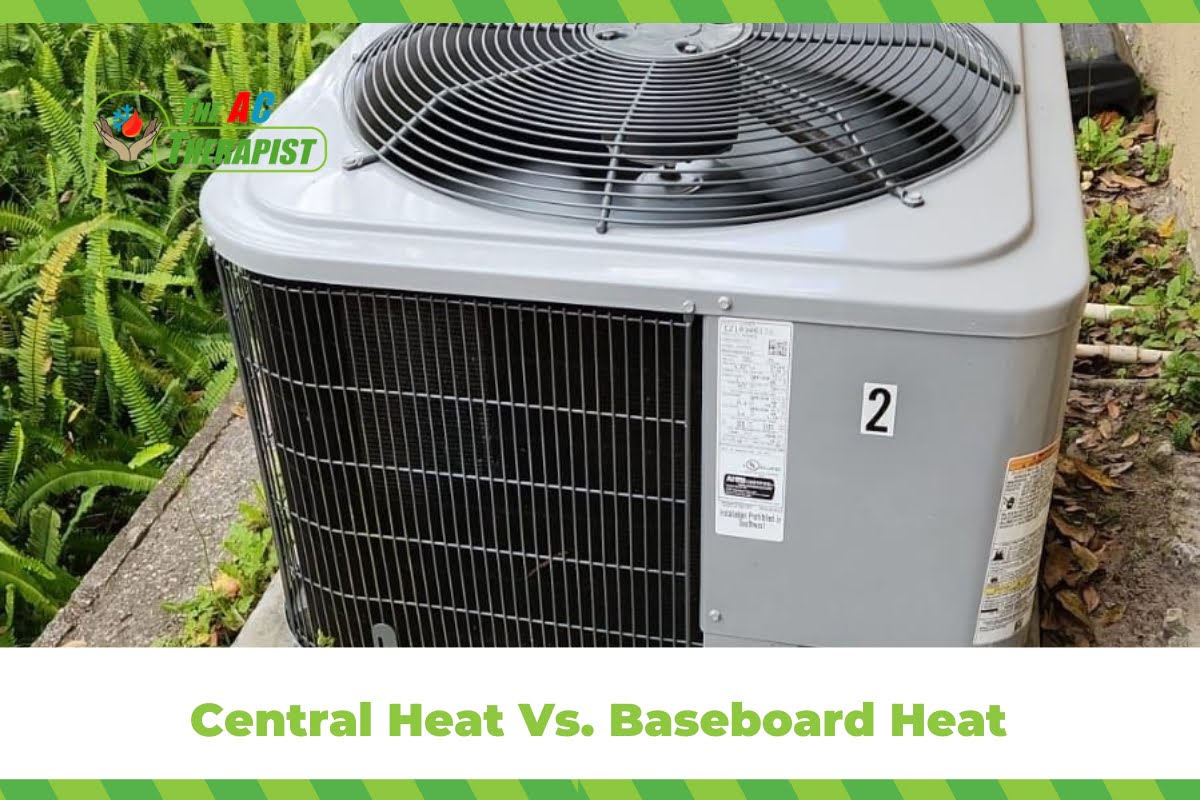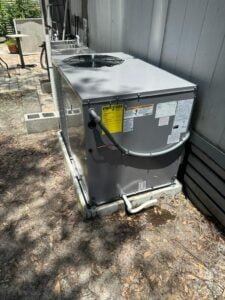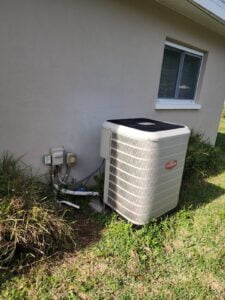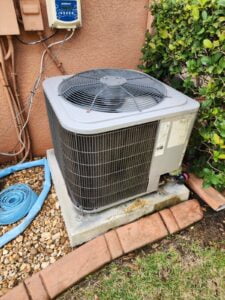Central Heat Vs. Baseboard Heat
When it comes to keeping your home warm and cozy, especially during the chilly months, selecting the right heating system is crucial. Homeowners often find themselves weighing the options between central heating and baseboard heating. Each system has its unique set of advantages and challenges, influencing not only the comfort of your living space but also your energy bills and the overall efficiency of your home heating solution. Central heating, known for its ability to uniformly heat the entire home from a single point, offers convenience and efficiency, making it a popular choice for many. On the other hand, baseboard heating provides an easy-to-install, room-by-room heating solution that can be ideal for certain living situations and preferences.
In this blog, we delve into the nitty-gritty of central heat versus baseboard heat, aiming to equip you with all the information you need to make an informed decision tailored to your home’s specific needs. We’ll explore how each system works, the pros and cons of both, cost implications, efficiency, environmental impact, and much more. Whether you’re building a new home, renovating an existing one, or simply looking to upgrade your heating system, understanding the key differences between central and baseboard heating is essential. So, let’s embark on this comprehensive guide to home heating, ensuring you choose the system that not only keeps you warm but also aligns with your lifestyle, budget, and energy-saving goals.
What is Central Heat?
Central heating is a comprehensive system designed to provide warmth to the entire interior of a building or a series of rooms from one central point. It is one of the most common and efficient methods of heating homes, especially in regions that experience harsh winters. The central heating system can utilize various fuels, including natural gas, oil, electricity, or renewable energy sources, to generate heat. This heat is then distributed throughout the home via a network of ducts (in the case of forced-air systems), pipes (with hot water radiators or hydronic systems), or even through electric cables or hot air under the floors (in radiant floor heating systems).
How Central Heating Works
Central heating systems work by generating heat at a central point and then distributing that heat throughout the home to maintain a comfortable temperature. The process involves a heat source, a distribution system, and controls that manage the operation of the system. Here’s an overview of how central heating systems function, focusing on the most common types: forced-air systems, hydronic (water-based) systems, and heat pumps.
Forced-Air Systems
- Heat Generation: In a forced-air system, the central heating unit, typically a furnace, generates heat by burning fuel (gas, oil, or propane) or using electricity. The furnace heats air that is drawn into the system from the home.
- Heat Distribution: The heated air is then pushed through a network of ducts by a blower fan. The ducts distribute the warm air throughout the home via air registers or vents located in each room.
- Temperature Control: The operation of the furnace is controlled by a thermostat, which senses the temperature of the air in the home. When the air temperature drops below the thermostat setting, the thermostat signals the furnace to turn on and heat air. Once the desired temperature is reached, the furnace shuts off until the next cycle.
Hydronic Systems
- Heat Generation: Hydronic systems, also known as hot water heating systems, use a boiler to heat water. The boiler can be fueled by natural gas, oil, electricity, or renewable energy sources.
- Heat Distribution: The hot water is circulated through a system of pipes to radiators, baseboard heaters, or underfloor heating loops installed in each room. As the hot water flows through these heating elements, it releases heat into the room.
- Temperature Control: Individual thermostats in rooms or zones can regulate the flow of hot water through the radiators or heating elements, allowing for precise temperature control in different areas of the home.
Heat Pumps
- Heat Generation and Absorption: Heat pumps don’t generate heat through combustion or electrical resistance. Instead, they use electricity to move heat from the outside air or ground into the home during winter (for heating) and from the inside to the outside during summer (for cooling).
- Heat Distribution: In heating mode, the heat pump raises the temperature of the refrigerant, which is then circulated through a coil in the air handler. A blower fan moves air across the coil, warming it before distributing it throughout the home via the duct system.
- Temperature Control: Like other central heating systems, heat pumps are controlled by a thermostat that regulates the system’s operation based on the home’s temperature and the desired set point.
Components of Central Heating Systems
- Heat Source: The heart of a central heating system is the heat source, typically a furnace, boiler, or heat pump, located in a central location like a basement or utility room.
- Distribution System: Depending on the type of central heating, the distribution system can include ductwork and vents for forced-air systems, pipes and radiators for hot water systems, or electrical cables and tubing for radiant systems.
- Thermostat: Central heating systems are controlled by a thermostat, which allows homeowners to set and maintain a desired temperature throughout the home. The thermostat monitors the indoor temperature and signals the heating system to turn on or off as needed.
Advantages of Central Heat
- Uniform Heating: Central heating systems are designed to heat an entire home efficiently and uniformly, eliminating cold spots and ensuring consistent comfort in all rooms.
- Improved Air Quality: Forced-air systems can include filters that trap dust, allergens, and other airborne particles, potentially improving indoor air quality when maintained properly.
- Convenience and Control: With a central heating system, you can easily control the temperature of your entire home through a single thermostat, and some systems allow for programmable or smart thermostat options for enhanced control and energy savings.
Considerations for Central Heat
- Installation Cost: The initial installation of a central heating system can be higher than other heating options, particularly if extensive ductwork or piping is required.
- Maintenance: To ensure efficiency and longevity, central heating systems require regular maintenance, including filter changes, duct cleaning, and professional check-ups.
- Space Requirements: The components of central heating systems, such as furnaces or boilers, require dedicated space, which may be a consideration for smaller homes or apartments.
What is Baseboard Heat?
Baseboard heating is a type of electric or hydronic heating system designed to heat individual rooms or zones within a home. These heaters are typically installed at the baseboard level along the walls of a room, where they provide direct heat to the space. Baseboard heaters operate either by electric resistance to generate heat or by circulating hot water (hydronic) through a system of pipes. Here’s a closer look at how both types of baseboard heating systems work and their key characteristics:
Electric Baseboard Heaters
Electric baseboard heaters work by drawing in cold air from the room through the bottom of the unit, heating it over electrically heated coils, and then releasing the warm air back into the room from the top of the heater. These heaters are simple to install, require no ductwork, and can be controlled individually, allowing for room-by-room temperature adjustments.
How They Work: When the thermostat for a room calls for heat, electricity flows through the heating element within the baseboard unit. The element heats up, and as air within the unit warms, it rises into the room, drawing cooler air into the bottom of the heater in a process known as convection. This cycle continues until the room reaches the desired temperature.
Pros of Electric Baseboard Heat
- Simple Installation: Electric baseboard heaters are relatively easy and inexpensive to install, making them an attractive option for retrofitting into existing homes or adding supplemental heat to specific rooms.
- Zonal Heating: They allow for precise control over the temperature in individual rooms, which can lead to energy savings by only heating spaces that are in use.
- Quiet Operation: Electric baseboard heaters operate silently, as they don’t involve moving parts like fans, making them suitable for bedrooms and quiet spaces.
Cons of Electric Baseboard Heat
- Higher Operating Costs: Because they run on electricity, which can be more expensive than other fuels like natural gas, electric baseboard heaters may lead to higher energy bills, especially if used as the primary heat source in a home.
- Space Requirements: The heaters take up wall space and must be kept clear of furniture and draperies to operate safely and efficiently, which can limit room layout options.
- Maintenance: They require regular cleaning to remove dust and maintain efficiency.
Hydronic Baseboard Heaters
Hydronic baseboard heaters, on the other hand, use hot water heated by a boiler that circulates through a loop of pipes and into each heater unit. The water heats metal fins inside the baseboard unit, which in turn radiates warmth into the room.
How They Work: The boiler heats water and circulates it through a loop of pipes connected to baseboard units. As the hot water passes through the units, metal fins attached to the pipes help radiate the heat into the room. The cooled water then returns to the boiler to be reheated and recirculated.
Pros of Hydronic Baseboard Heat
- Efficient and Consistent Heat: Hydronic systems provide more consistent and longer-lasting heat compared to electric baseboard heaters, as the water retains heat well.
- Lower Operating Costs: If the system is connected to an efficient boiler, hydronic baseboard heating can be more economical to operate than electric baseboard heating, especially in areas where natural gas is cheaper than electricity.
- Quiet and Clean: Like electric models, hydronic baseboard heaters operate quietly and don’t circulate dust and allergens.
Cons of Hydronic Baseboard Heat
- Higher Installation Costs: The initial cost of installing a hydronic baseboard system, including the boiler and piping, can be higher than electric baseboard heaters.
- Maintenance: While generally low maintenance, hydronic systems can require occasional bleeding to remove air from the lines and may need more attention if leaks develop.
Choosing Between Electric and Hydronic Baseboard Heaters
The choice between electric and hydronic baseboard heaters depends on several factors, including the specific heating needs of your home, installation and operating costs, energy efficiency, and personal preferences. Electric baseboard heaters might be more suitable for occasional use, or additions, or when installing a central heating system or hydronic piping is impractical. On the other hand, hydronic baseboard heaters can be a better choice for primary heating in homes where a boiler system is already in place or where the lower operating costs and more consistent heat output justify the higher initial investment.
Cost Comparison
When evaluating the cost of central heat versus baseboard heat, it’s essential to consider both the initial installation costs and the long-term operating expenses. The choice between these two heating options can significantly impact your budget and energy consumption over time. Here’s a breakdown of the cost comparison:
Initial Installation Costs
- Central Heat: The initial installation cost for central heating systems can be substantial, especially if your home requires new ductwork or if you’re installing a high-efficiency system. Prices vary widely depending on the type of system (furnace, boiler, heat pump), the size of your home, and the complexity of the installation. On average, installing a new central heating system can range from a few thousand dollars to over ten thousand dollars.
- Baseboard Heat: In comparison, baseboard heating systems are generally less expensive to install. Since each unit operates independently and doesn’t require ductwork, the installation process is simpler and less invasive. The cost for electric baseboard heaters can be quite low per unit, but keep in mind that if you’re outfitting an entire house, these costs can add up. However, it typically remains less than the cost of installing a central heating system.
Operating Costs
- Central Heat: The operating costs for central heating systems depend on the type of fuel used (natural gas, oil, electricity, etc.), the efficiency of the system, and the cost of fuel in your area. Generally, natural gas is considered one of the most cost-effective and widely available heating fuels, making gas furnaces a popular choice for central heating. High-efficiency systems can offer significant savings on energy bills, despite the higher initial investment.
- Baseboard Heat: Electric baseboard heaters tend to have higher operating costs than central heating systems, especially if they’re used as the primary heat source in a home. Electricity rates are typically higher than natural gas or oil, making electric heat more expensive to operate. However, baseboard heaters can be cost-effective in smaller spaces or in areas with mild winters where heating demands are lower. Additionally, the ability to control heaters on a room-by-room basis can lead to energy savings by heating only occupied spaces.
Central Heat vs. Baseboard Heat: Navigating Your Heating Options with The AC Therapist
Deciding between central heat and baseboard heat is more than just choosing a heating system; it’s about creating a comfortable, energy-efficient, and cost-effective environment for your home. As we’ve dissected the pros and cons of both heating methods in this comprehensive guide, it’s clear that each option serves different needs, preferences, and circumstances.
Central heating systems offer a holistic approach to home warmth, providing uniform heating and improved air quality, suited for those looking to heat their entire home efficiently. On the other hand, baseboard heating presents a flexible, easy-to-install solution, perfect for targeted heating or supplementing existing systems, especially in smaller spaces or specific areas of the home.
The choice between these heating solutions involves considering installation costs, operating expenses, maintenance requirements, and the specific layout and insulation of your home. It’s also essential to think about the long-term implications of your choice on your energy bills and environmental impact. With energy efficiency and sustainability becoming increasingly important, selecting a heating system that aligns with these values is crucial.
At The AC Therapist, we pride ourselves on offering expert guidance and high-quality services tailored to the unique heating and cooling needs of residents in the Tampa Bay area. Our team, equipped with extensive knowledge and experience in both central and baseboard heating systems, is committed to helping you navigate this decision-making process. From initial consultations and installations to ongoing maintenance and support, The AC Therapist is your trusted partner in ensuring your home remains a comfortable refuge all year round.
Understanding the intricacies of home heating can be daunting, but you don’t have to make these decisions alone. Whether you’re building a new home, upgrading your heating system, or simply exploring your options, The AC Therapist is here to provide the expertise and support you need.
By choosing us, you’re not just selecting a heating solution; you’re investing in peace of mind, comfort, and the assurance that your home heating system is efficient, reliable, and perfectly suited to your needs. Let us help you turn your house into a warm and inviting home, where every room welcomes you with the ideal temperature and comfort level. Together, we’ll find the perfect heating solution that meets your needs, exceeds your expectations, and enhances your home living experience.












